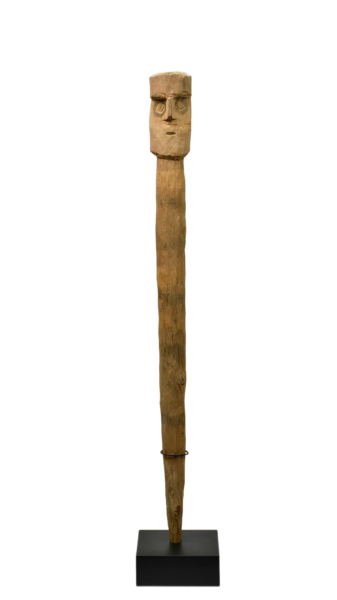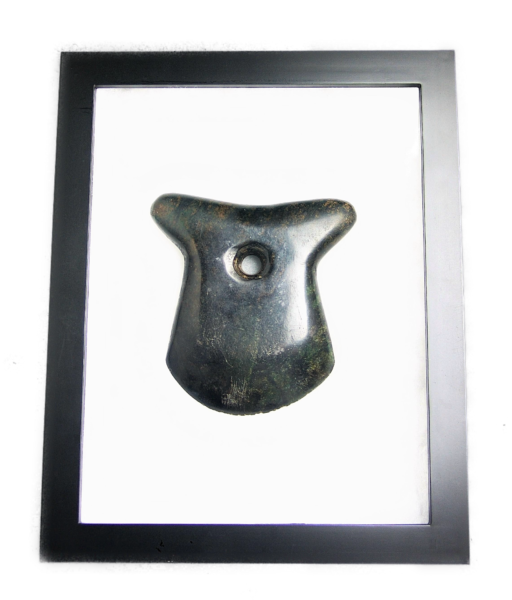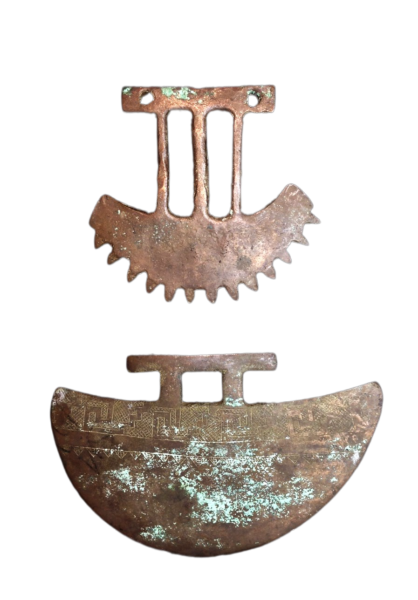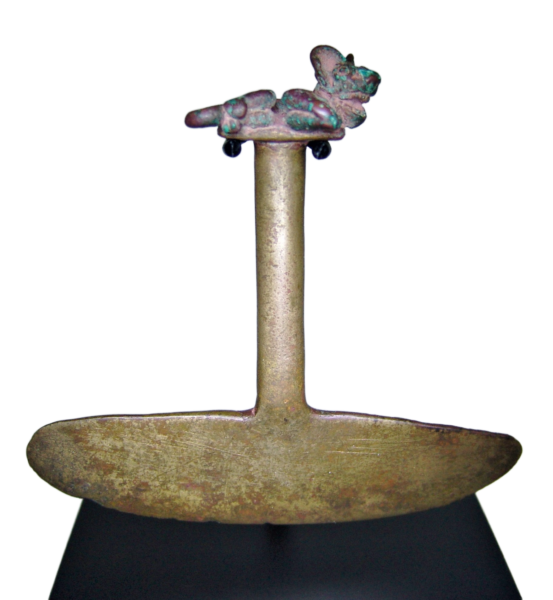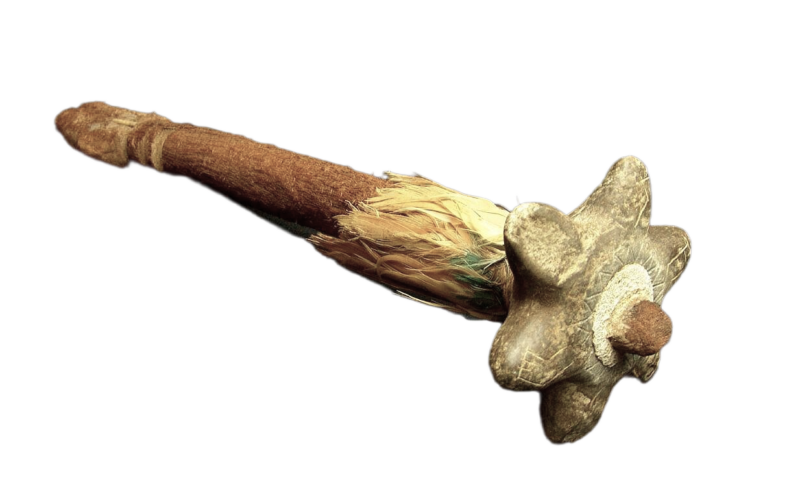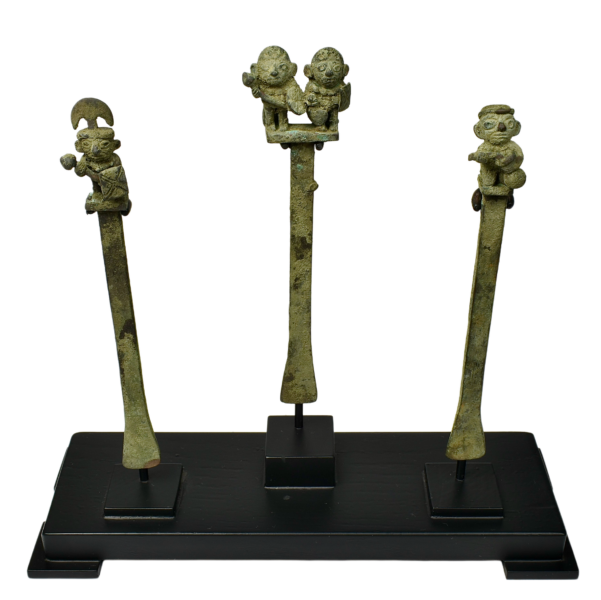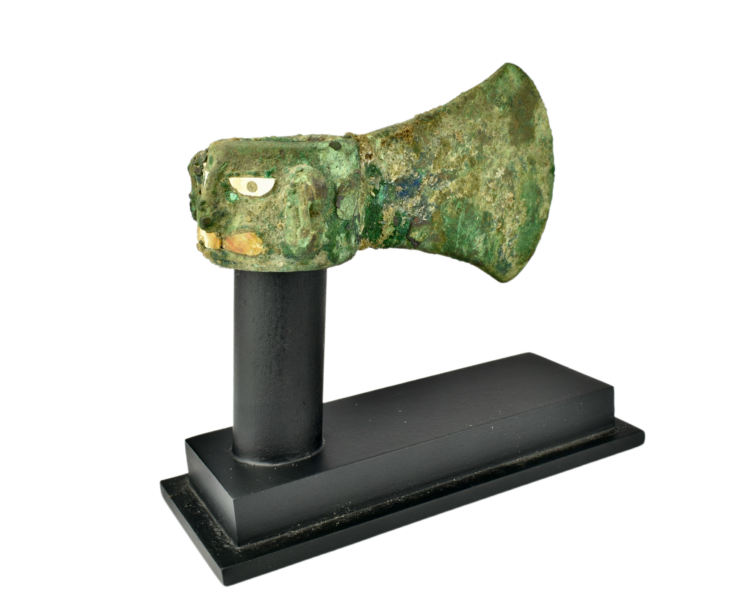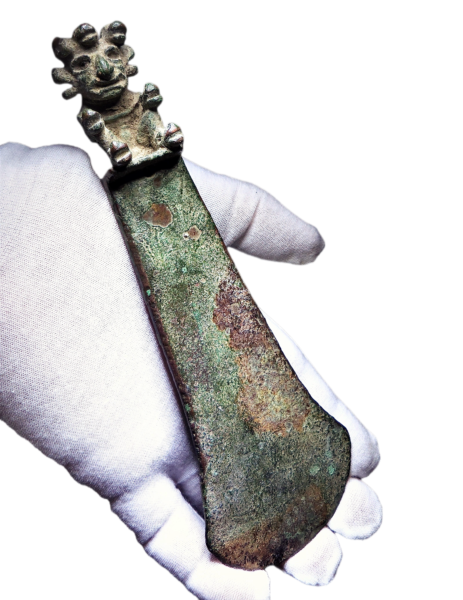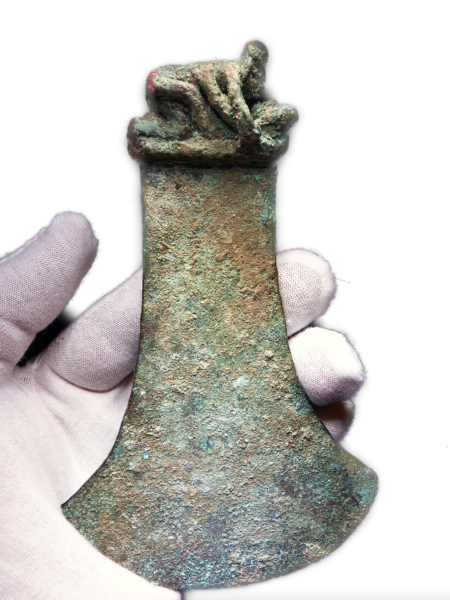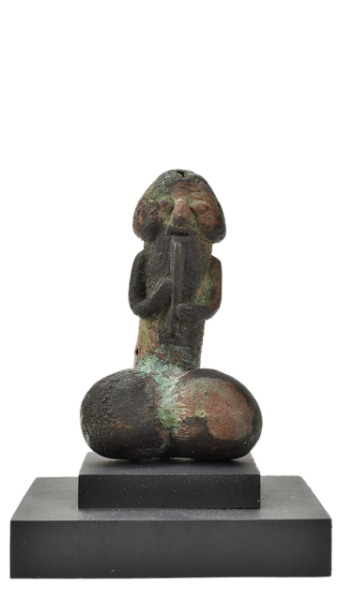Precolumbian Art - South America
South America includes Colombia, Venezuela, Ecuador, Peru, Bolivia, and Argentina
In pre-Columbian Colombia, the principal archaeological cultural phases are Calima, Sinu, Chibcha, Quimbaya, San Agustin, Tairona, Cauca, Nariño, Muisca, Tumaco, and Inca.
In Pre-Columbian Ecuador, the principal archaeological cultural phases include Las Vegas, Valdivia, Machalilla, Cotocollao, Chorrera, Narrio, La Tolita, Guangala, Jamacoaque, Jambeli, Capuli, Bahia, Puruha, Cuasmal, Manteno, Huancavilca, Milagro – Quevedo, Atacames, Canari, and Inca.
In Pre-Columbian Peru, the principal archaeological cultural phases are Chavin, Huari/Wari, Paracas, Vicus, Recuay, Nazca, Salinar, Mochica/Moche, Tiahuanaco/Tiwanaku, Chimu, Ica, Chancay, and Inca.
In Pre-Columbian Bolivia, the principal archaeological cultural phases are Chiripa, Yaya-Mama, Tiahuanaco/Tiwanaku, Huari/Wari, Moxos, and Inca.
In pre-Columbian Argentina, the principal archaeological cultural phase is Condorhuasi-Alamito.
Within this expanse of South American history, visitors will find a fascinating display of Pre-Columbian artistry. The collection will feature pottery that showcases intricate designs and practical forms, stone artifacts carved with symbolic meanings and used for ceremonial or everyday purposes, metal implements, and wooden pieces that highlight the craftsmanship and resourcefulness of the ancient inhabitants. Additionally, textile works will be on display, revealing the complex weaving techniques and vibrant patterns that conveyed cultural identity and tradition. This rich array of artifacts aims to immerse viewers in the depth of South America’s cultural heritage, celebrating the artistry and enduring legacy of its ancient civilizations.
Large Chancay Wooden Scepter
A hansom and large Chancay wooden scepter/staff. Made from light wood (Alder tree) that measures 21" in length. Iconic homogeneous face finial.
More Info / InquireInca Serpentine Stone Axe
A dark green T-shaped Serpentine Inca stone axe. Both sides are polished with a perforation hole. The prior owner has cleaned one side of the stone, exposing
More Info / InquireInca Axe Blades c. 1400 A.D.
A pair of heavy ornamental bronze circular axe blades with irregular form. Both are cast and hammered on the cutting edge. One has a crescent-shaped blade...
More Info / InquireInca Bronze Jaguar Tumi
This Inca bronze Jaguar tumi represents a remarkable example of ancient ceremonial artistry. The tumi features a short, thick handle designed for a firm grip
More Info / InquireParacas Copper Short Spear
Paracas Copper Short Spear. This extraordinary bi-point artifact is uniquely shaped and bears iconographic importance. It is produced from native copper,
More Info / InquireParacas Wood, Stone and Feather Club
An exceptional Paracas wooden club. One of the hardest items to come by intact from this region with these outstanding features. The wood handle is probably
More Info / InquireFine Set of Moche Bronze Tumi
A fine set of large Moche Bronze Tumi. Each ceremonial knife is crowned with a figurine of a warrior wearing a combination of different battle-ready garments
More Info / InquireMoche Copper Axe “Ai Apaec”
This axe head is an extraordinarily decorated anthropomorphic blade. The artisans fashioned it from copper in the traditional Vicús style.
More Info / InquireMoche Bronze Lime Spoons c 100 BC – 300 AD
An ornate pair of lime spoons with Sandpiper finials. These small spoons removed lime from specialized receptacles (caleros, poporus) as part of the coca...
More Info / InquirePublished Moche “Ai Apaec” Tumi
Atop of this copper tumi sits one of the most important deities in the Moche pantheon, the great god of creation - Ai Apaec. God of the sky and mountain...
More Info / InquirePublished Moche “Erotic Scene” Tumi
This Moche copper tumi is finalized with a detailed couple in a symbolic erotic scene. One person is lying on top while the other rests on the bottom platform.
More Info / InquireImportant Moche Phallic Copper Flutist
This unique and exceptionally rare artifact from the Moche culture of ancient Peru is a stand-alone hollow copper phallus measuring 2.5 inches in length.
More Info / Inquire